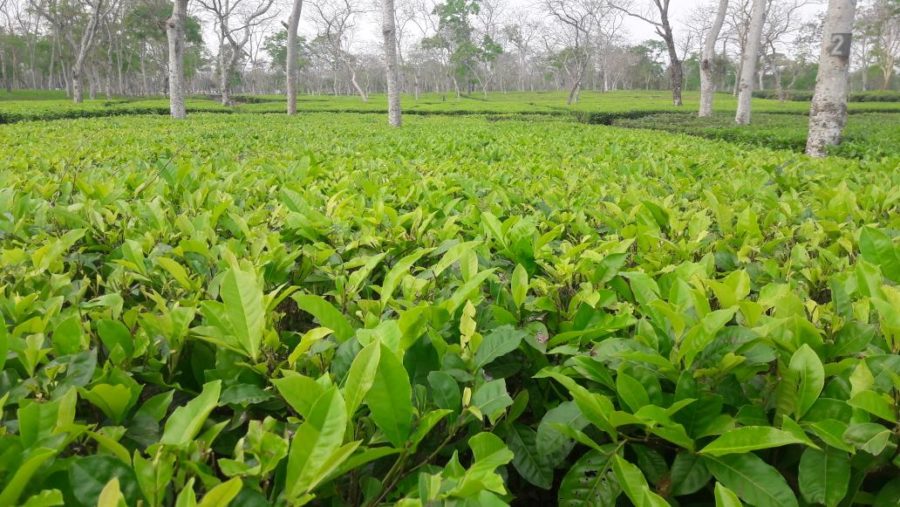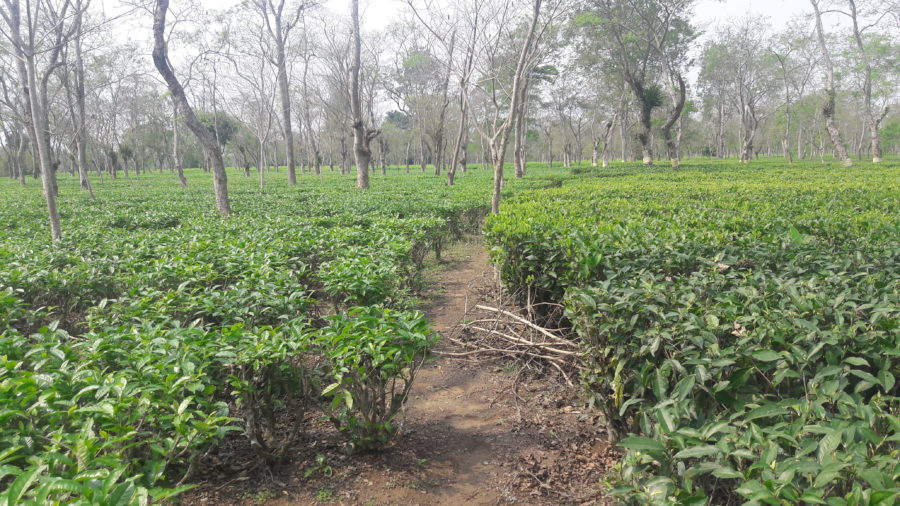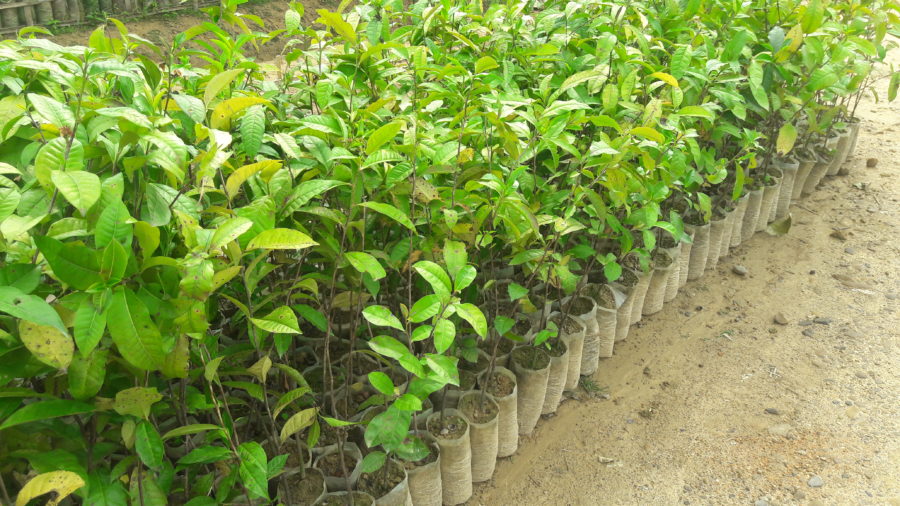24th March 2017 Kolkata, India
Tea garden


I can’t find a good explanation for why they are called gardens. However, I’ve just seen a tea plantation or estate, as we tend to call them in Britain, and can understand why they are called tea gardens in India.
Last weekend, I visited a tea garden in Assam, one of the main tea production areas. I was driven round the whole estate and saw the tea plants in their various stages of growth in preparation for picking the terminal bud and two leaves – the part used to make the tea. The terrain was mainly flat, and although it was still relatively early in the year, in several places the tea plants looked like a comfortable green carpet.
I’m interested in different types of agriculture because I was born on a farm. When I go to the countryside, I like seeing what sort of agriculture there is, and how it fits in with the landscape.
I hadn’t realised that while tea plants need a warm, damp climate, they don’t like having waterlogged roots. While they prefer tropical and sub-tropical climates, they like good drainage too. So many tea gardens are planted on gentle slopes including the tea garden I visited, and away from valley bottoms and other ground that can be prone to flooding.

Tea plants also don’t produce leaves so quickly in the hottest temperatures, so the bushes often have trees planted amongst them to provide some shade. The landscape of many tea gardens tends to be undulating to a lesser extent as in Assam, or very hilly as in Darjeeling, so that there is good run off for rain water. As a landscape, tea estates can indeed look wonderful and lush.
I’m lucky that Kolkata is the centre of the tea industry in India. When they’ve found out about my interest, owners have kindly invited me to visit their gardens. To avoid causing offence, I decided that for my first formal visit to a tea garden, I should visit one owned by a British company. Which is why I was visiting a garden owned by Goodricke, part of the Camellia group.
The visit was a delight. I was out of the metro city and in the calm and peaceful countryside. I toured both the garden and the tea factory on the estate where the leaves were processed – through the withering, cutting, drying and the sorting of the tea. I saw the various stages of life of a tea bush, and the various tasks to maintain the tea estate being carried out by the workers.
It all appeared idyllic, and on a sunny day, the garden certainly photographed well. But as a farmer’s son, I know it is very easy to romanticise rural life. The reality is that it can be tough working in all weathers, especially if you cannot always be sheltered from the worst.

Tea production is still very labour intensive. Despite profound changes in technology in the last 50 years or so, the essence of tea production is still to grow a tea bush from which workers can most efficiently pick the fresh buds and leaves. The tea garden I visited was large – over 900 hectares – and employed over 3,000 permanent and seasonal workers.
Therefore a major element of the job for the planters, the managers on tea estates, is to direct and manage the workforce. There seemed to be a strong sense of community amongst those who worked on the estate. However, this is not always the case, and there have been labour disputes and other difficulties on some tea estates which have been well documented.
The planters explained to me the rights of the pickers and other workers under the various Plantations Labour Acts, and of the two hospitals and school that the company provides for the workers. They also noted that their garden was certified under the Ethical Tea Partnership, an organisation that seeks to improve the lives of tea workers and their environment.
While tea is generally treated as a commodity, there are significant variations between different types and sources of tea. There is a premium for the sort of good quality tea that companies like Goodricke aim to produce. This requires skill and good quality control to produce such tea, and varieties that appeal to different consumers.
And you need patience in the tea business. As well as the right terrain, the plants prefer a slightly acidic soil. It can take two years of the production of other crops to prepare the ground to take a year-old sapling tea plant. It then takes four to five more years of growth and careful pruning before you have a bush ready to have tea leaves plucked from it.
When I have talked to planters in Assam and Kolkata, I have heard some of the same wisdom that I can recall from my childhood. That their livelihoods were always dependent on clement weather: produce too much and you can’t sell it (or the price falls too much that you make a loss). Produce not enough, and you won’t make any profit. They worried about where the next generations of planters and workers might come from, as younger people were nowadays more likely to seek work in towns and cities.
In Assam, we also talked about the various oddities of working in a tea garden. They had their own, unofficial time zone, known as “bagan time”, one hour in advance of Indian standard time. This made sense given that the sun rises a good hour earlier in Assam than in Delhi. They talked of wildlife – leopards are often found in tea gardens because they have cover that can conceal them and space to avoid the tea garden workers.
While I came away understanding that there is a good case for calling them tea gardens, I still feel that “garden” was something of a misnomer. Tea production is a business and market forces, as much as the weather, determine the price of tea. Like gardens, they are indeed a pleasure to visit, to enjoy the greenery, the open spaces and fresh air. But I appreciate that to get my cup of tea, I rely on the hard work of the tea picker and the skill and good management of the planter.
Thank you for your kind words. I could have said more, but will write about other aspects of tea in the future.
Wow! You simply transported me to a tea garden…
My memories of Darjeeling, Munnar, Ooty and Siliguri, Bagdogra (all known for their tea gardens) were revived.
Beautiful narration…